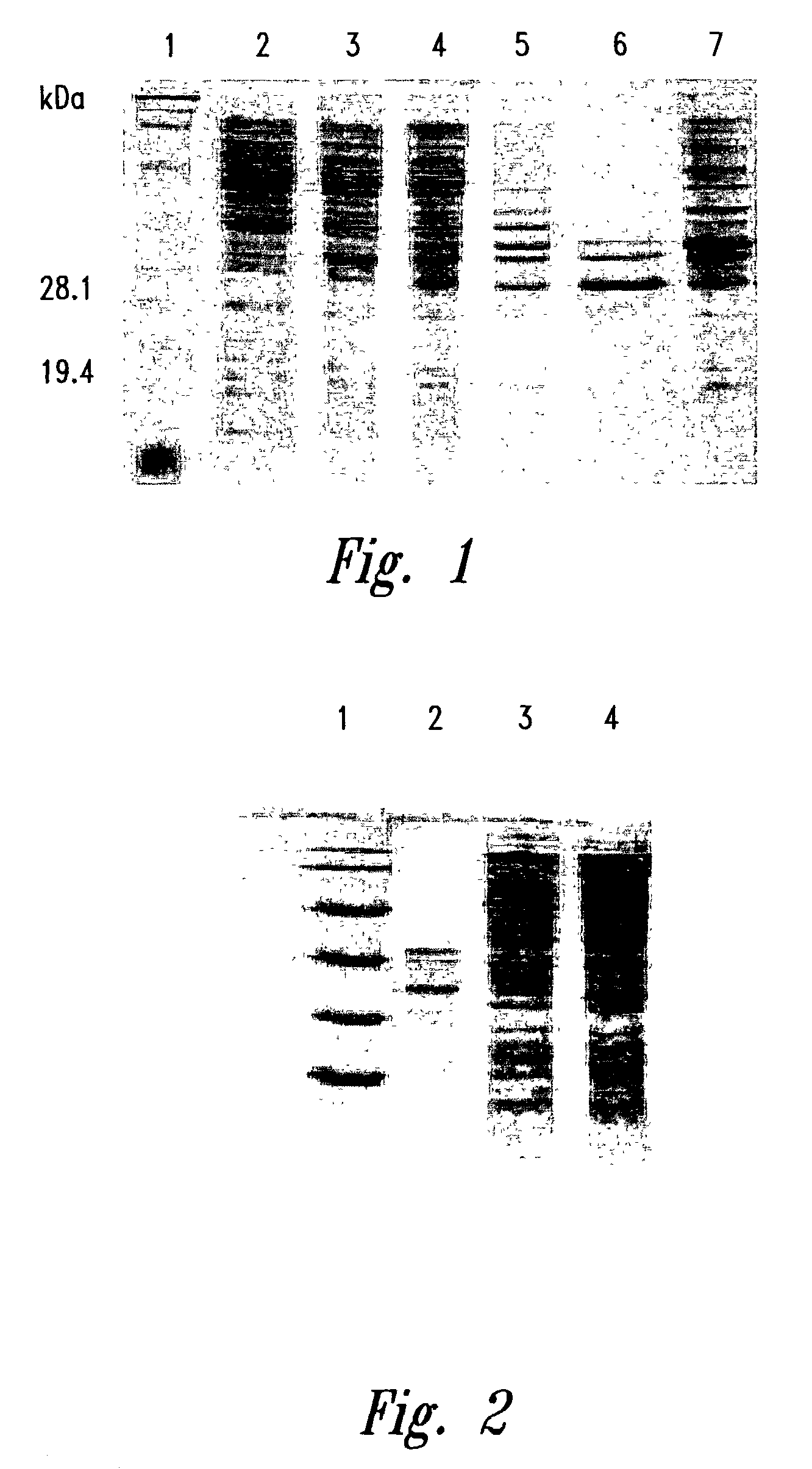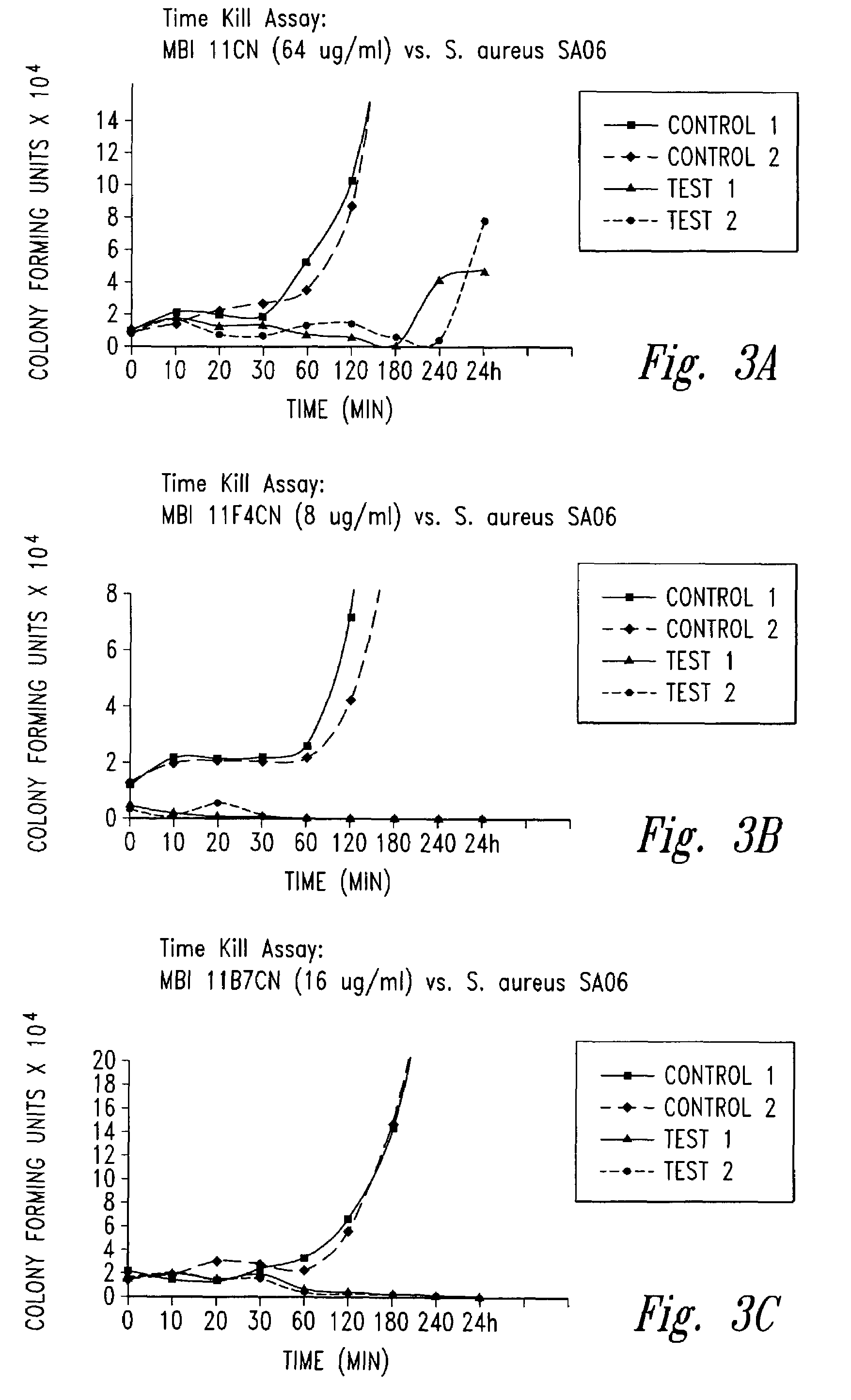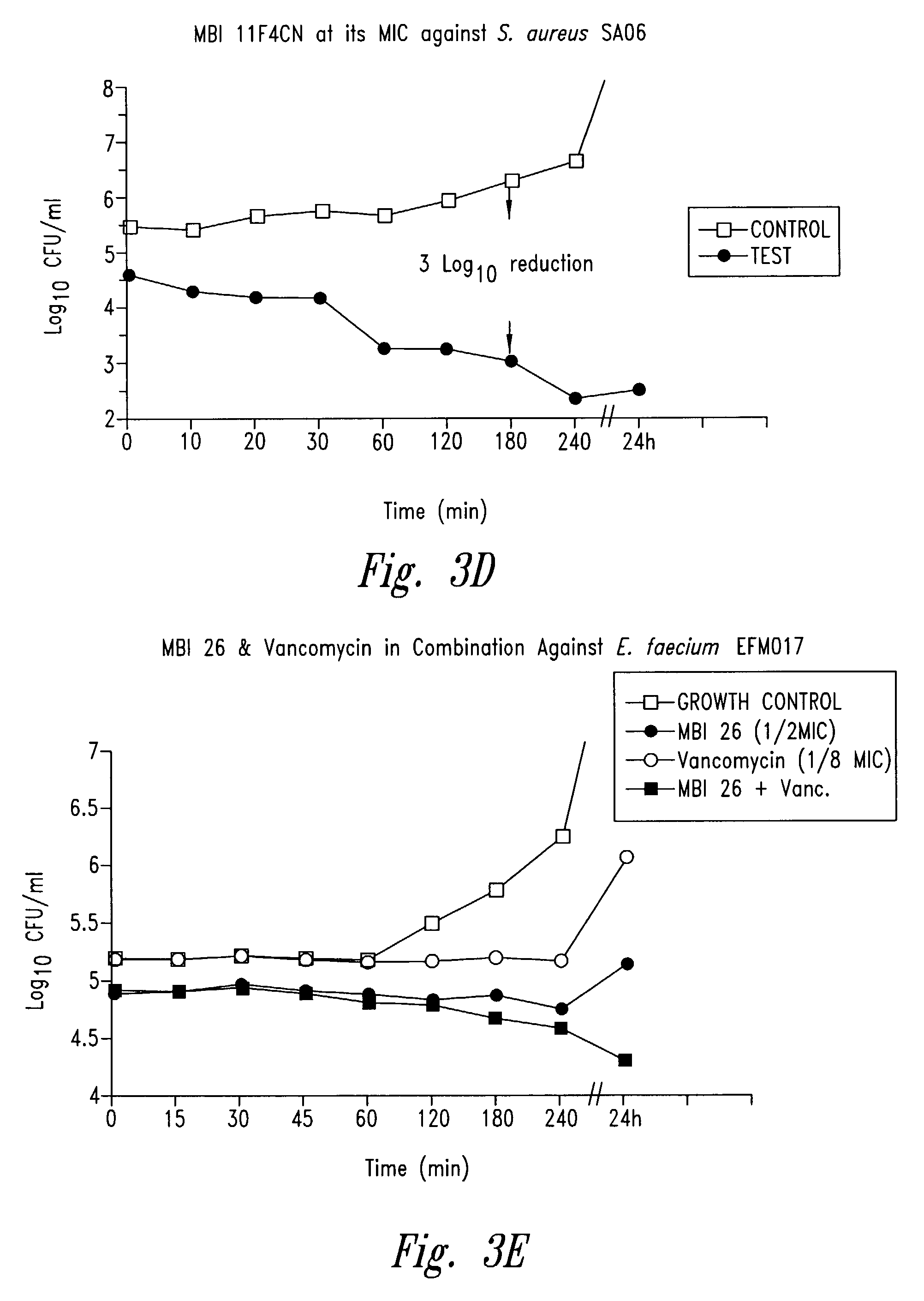Compositions and methods for treating infections using cationic peptides alone or in combination with antibiotics
a technology of cationic peptides and antibiotic agents, which is applied in the direction of disrupted materials, peptides, drug compositions, etc., can solve the problems of poor hygiene, nutritional deficiencies, and serious concern of immunocompromised individuals, and achieve the effect of enhancing the activity of an antibiotic agent and enhancing the activity of lysozyme or nisin
- Summary
- Abstract
- Description
- Claims
- Application Information
AI Technical Summary
Benefits of technology
Problems solved by technology
Method used
Image
Examples
example 1
Synthesis Purification and Characterization of Cationic Peptides and Analogues
[0235]Peptide synthesis is based on the standard solid-phase Fmoc protection strategy. The instrument employed is a 9050 Plus PepSynthesiser (PerSeptive BioSystems Inc.). Polyethylene glycol polystyrene (PEG-PS) graft resins are employed as the solid phase, derivatized with an Fmoc-protected amino acid linker for C-terminal amide synthesis. HATU (O-(7-azabenzotriazole-1-yl)-1,1,3,3-tetramethyluronium hexafluorophosphate) is used as the coupling reagent. During synthesis, coupling steps are continuously monitored to ensure that each amino acid is incorporated in high yield. The peptide is cleaved from the solid-phase resin using trifluoroacetic acid and appropriate scavengers and the crude peptide is purified using preparative reversed-phase chromatography. Typically the peptide is prepared as the trifluoroacetate salt, but other salts, such as acetate, chloride and sulfate, can also be prepared by salt exc...
example 2
Synthesis of Modified Peptides
[0240]Cationic peptides, such as indolicidin analogues, are modified to alter the physical properties of the original peptide, either by use of modified amino acids in synthesis or by post-synthetic modification. Such modifications include: acetylation at the N-terminus, Fmoc-derivatized N-terminus, polymethylation, peracetylation, and branched derivatives.
[0241]α-N-terminal acetylation. Prior to cleaving the peptide from the resin and deprotecting it, the fully protected peptide is treated with N-acetylimidazole in DMF for 1 hour at room temperature, which results in selective reaction at the α-N-terminus. The peptide is then deprotected / cleaved and purified as for an unmodified peptide.
[0242]Fmoc-derivatized α-N-terminus. If the final Fmoc deprotection step is not carried out, the α-N-terminus Fmoc group remains on the peptide. The peptide is then side-chain deprotected / cleaved and purified as for an unmodified peptide.
[0243]Polymethylation. The purif...
example 3
Recombinant Production of Peptide Analogues
[0248]Peptide analogues are alternatively produced by recombinant DNA technique in bacterial host cells. The peptide is produced as a fusion protein, chosen to assist in transporting the fusion peptide to inclusion bodies, periplasm, outer membrane or extracellular environment.
Construction of Plasmids Encoding MBI-11 Peptide Fusion Protein
[0249]Amplification by polymerase chain reaction is used to synthesize double-stranded DNA encoding the MBI peptide genes from single-stranded templates. For MBI-11, 100 μl of reaction mix is prepared containing 50 to 100 ng of template, 25 pmole of each primer, 1.5 mM MgCl2, 200 μM of each dNTP, 2U of Taq polymerase in buffer supplied by the manufacturer. Amplification conditions are 25 cycles of 94° C. for 30 sec., 55° C. for 30 sec., 74° C. for 30 sec., followed by 74° C. for 1 min. Amplified product is digested with BamHI and HindIII and cloned into a plasmid expression vector encoding the fusion partn...
PUM
| Property | Measurement | Unit |
|---|---|---|
| width | aaaaa | aaaaa |
| pharmaceutical composition | aaaaa | aaaaa |
Abstract
Description
Claims
Application Information
 Login to View More
Login to View More - R&D
- Intellectual Property
- Life Sciences
- Materials
- Tech Scout
- Unparalleled Data Quality
- Higher Quality Content
- 60% Fewer Hallucinations
Browse by: Latest US Patents, China's latest patents, Technical Efficacy Thesaurus, Application Domain, Technology Topic, Popular Technical Reports.
© 2025 PatSnap. All rights reserved.Legal|Privacy policy|Modern Slavery Act Transparency Statement|Sitemap|About US| Contact US: help@patsnap.com



